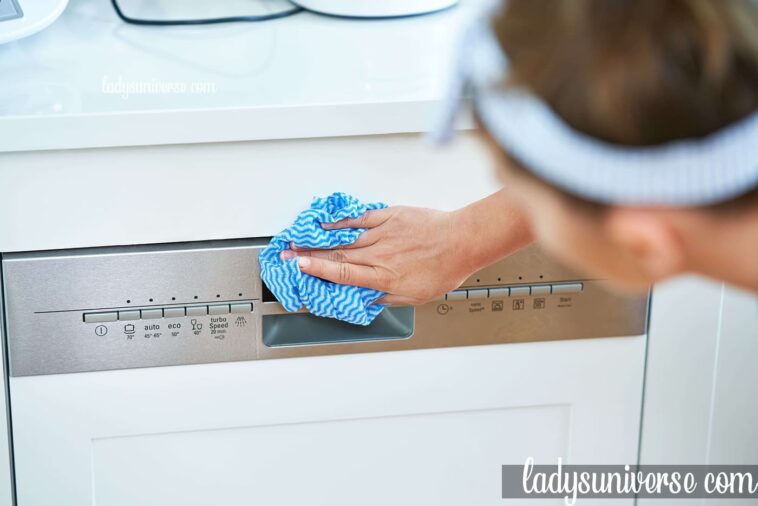A dishwasher is less of a self-cleaning appliance than you may think. While they can clean your dishes easily, the appliance will also need regular cleaning. If you don’t regularly clean your dishwasher, undissolved food, minerals, and grease stains may build up over time and compromise the quality of cleaning you get from the appliance.
Running a regular cycle is also essential for your dishwasher. If you leave dirty dishes in the appliance for hours, there can be added need for cleaning and extra spots that form in the racks and along the base of the appliance. Because the dishwasher is very good at spreading water throughout the internal tub, you will spread all the bacteria that can build up along the dishes or potentially get musty smells after a wash load is completed.
Whether you’ve noticed that odor is building up inside the dishwasher or you see more food particles on your dishes, knowing how to clean the appliance can keep your kitchen smelling better and ensure your dishwasher is more effective. Regular cleaning helps the appliance run more efficiently and can be a massive help if you rinse your dishes or prewash them thoroughly before they go through a cycle.
Keeping a dishwasher running regularly and keeping the internal components clean will be essential to getting crystal-clean dishes every time. We have some top tips on keeping your dishwasher clean so that you can keep your dish cycles running smoothly and ensure your dishwasher is not in danger of getting damaged due to the buildup of old foodstuff, grease, and other factors.
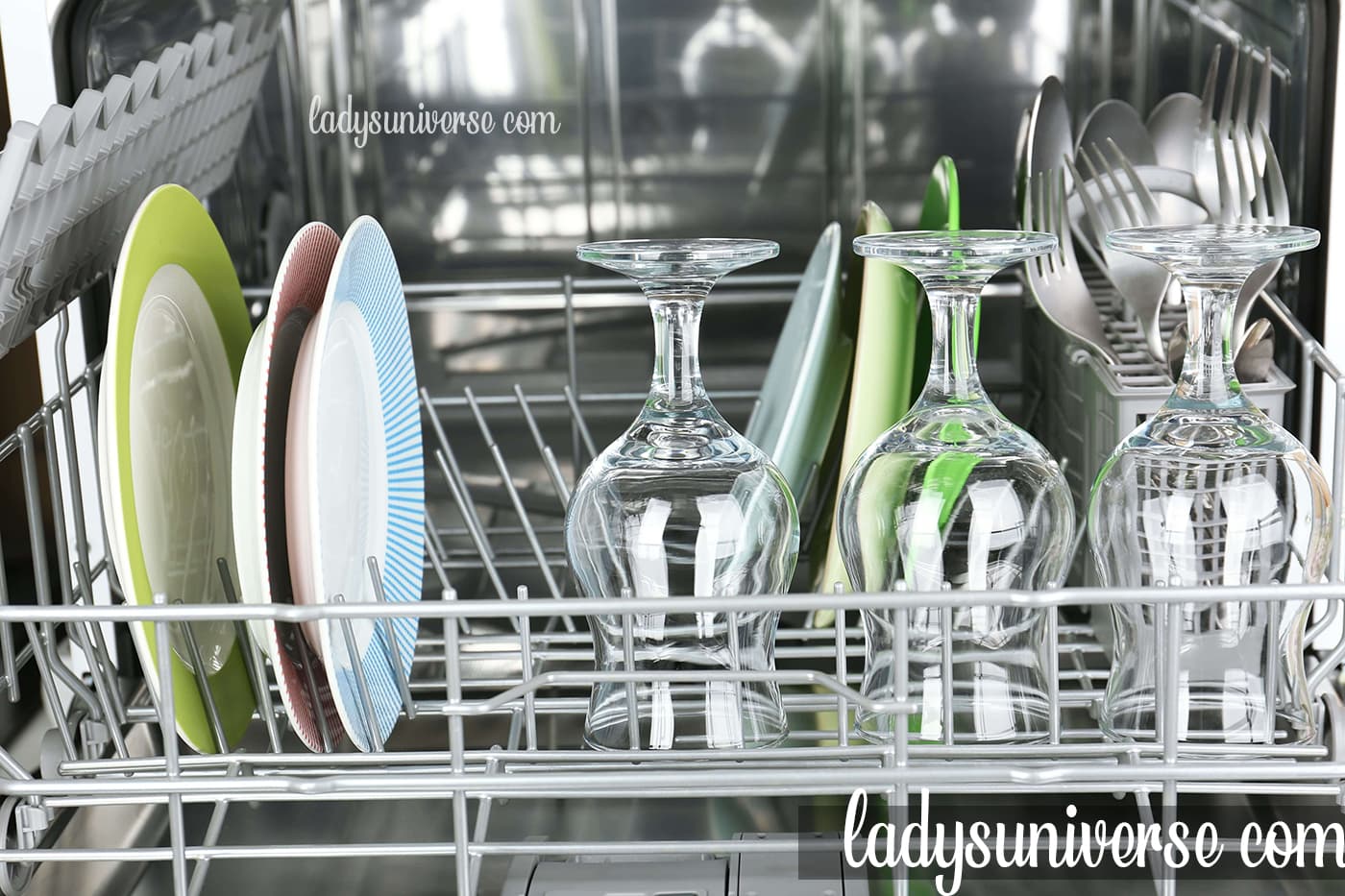
Contents
- 1 How often does a dishwasher need cleaning?
- 2 How to clean a dishwasher:
- 3 Should you pre-rinse dishes?
- 4 Wiping away weekly grime:
- 5 Cleaning your dishwasher filter:
- 6 Monthly deep cleaning for dishwashers:
- 7 How to clean your dishwasher exterior:
- 8 Using vinegar to deep clean a dishwasher:
- 9 Can I use bleach to clean my dishwasher?
How often does a dishwasher need cleaning?
The frequency that you clean your dishwasher comes down to the number of cycles you run through the dishwasher daily or weekly. If you run a load every day, you should consider a cleaning schedule that matches this one:
After every load: Remove the excess food from inside the dishwasher by removing and cleaning the filter at the bottom of the tub.
Every week: Wipe down the gaskets and door edges to remove debris from the dishwasher.
Every month: Do a deep clean on the interior and run a cleaning cycle without dishes after your deep clean.
As required: Clean the dishwasher’s exterior and check the interior for spots that regularly collect debris, film, or have begun to leak.

How to clean a dishwasher:
Food removal:
Most of the odor problems from a dishwasher are a result of bacteria. The bacteria growth from a dishwasher is often caused by a buildup of leftover food after a cycle. Most dishwashers have filters and methods to break up waste so it does not circulate in a cycle and return to the dishes. Small bits of foods or greasy foods may persist or get stuck along the heating element.
Pull out the bottom rack of your dishwasher after it is empty and remove all the extra pieces of food with a paper towel.
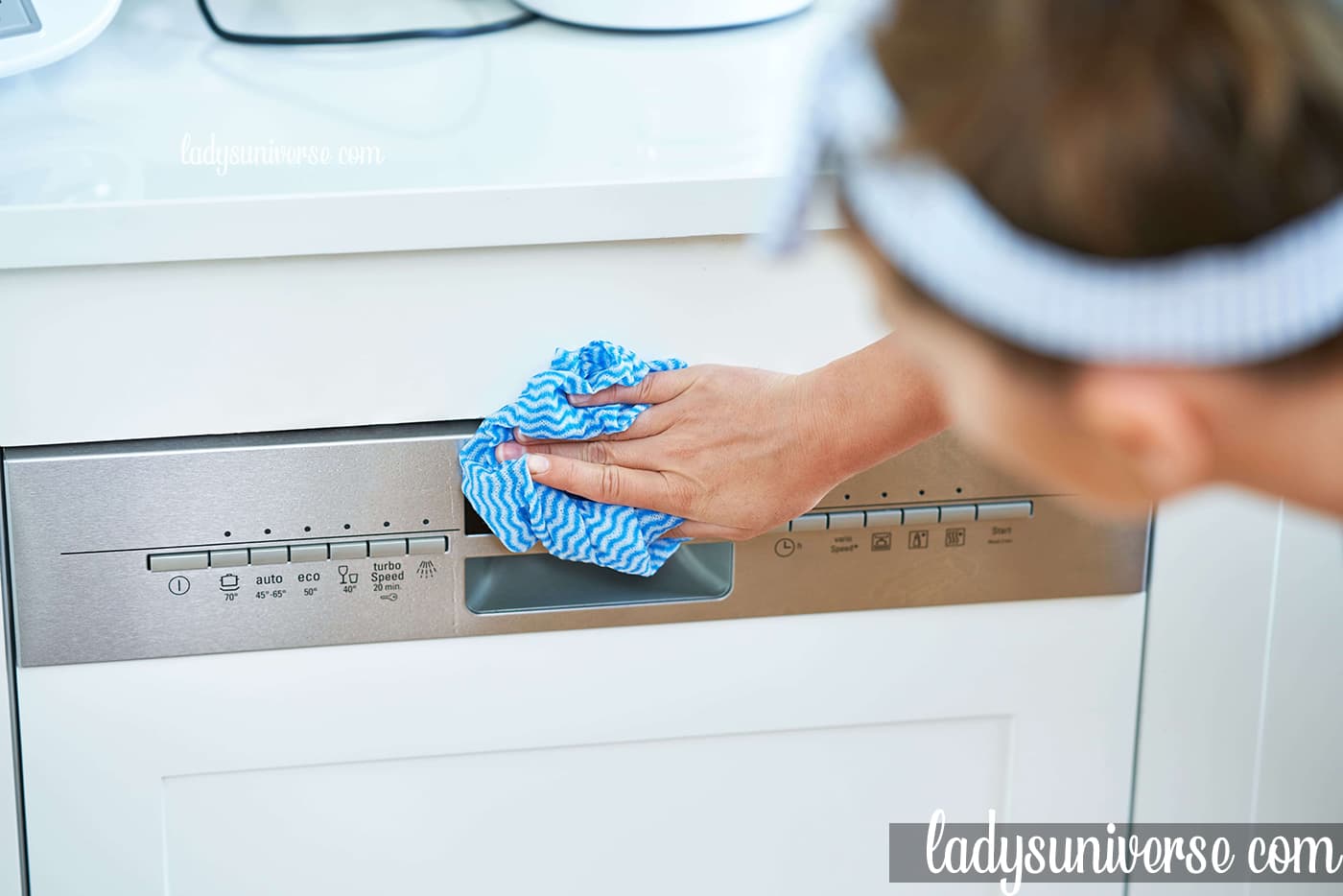
Should you pre-rinse dishes?
If you don’t plan to run your dishwasher immediately after you load the plates, you should consider rinsing down the dishes to prevent odors from occurring. If you are running a cycle after you load the dishes, wipe them down with a cloth or utensil into the garbage. A complete rinse is not likely needed if you are going to be thoroughly scraping off food waste and running the dishes immediately. Make sure to remove any labels or stickers from your new dishes as well as these can clog up dishwasher filters and lead to more food buildup.
Wiping away weekly grime:
Starting with the door area, wipe away any grease or food splatters that may have stuck along the interiors. Wash down the bottom of the dishwasher under the door, the edges of the door, and the handle along the dishwasher controls. A microfiber cloth and gentle multipurpose cleaner can help remove this extra food and grease.
Move on to the dispenser and gasket area after this. The seals can be cleaned with a soft toothbrush that you dip in the gentle multipurpose cleaner or a mix of warm water and dish detergent. Scrub along the dispensers in your dishwasher to remove any excess traces of detergent buildup that can prevent them from spreading the detergent evenly. Finish your scrubbing by wiping the areas with a damp cloth to remove any excess cleaner.
Never use a bleach-based cleaner to clean the interior of your dishwasher unless the components are primarily stainless steel. Check your owner’s manual for the dishwasher, as it can list some recommended cleaners and products to avoid.
Cleaning your dishwasher filter:
The filter for your dishwasher can be found along the base of your spray arm. To access it, you will likely need to pull out the bottom rack of your dishwasher. If you are having trouble removing the filter to clean it, check your owner’s manual for further instructions.
After removing your dishwasher filter, clean it by rinsing it under hot running water to remove any loose food particles on the surface. After the initial particles are removed, scrub the mesh screen and the plastic frame with a smooth toothbrush to remove any particles that get stuck along the deeper parts of the filter. Rinse over the filter again to remove them and lock your filter back into place.
Always ensure your filter is locked in, as you can cause damage to your dishwasher if the filter floats around or gets dislodged during a cycle. Running your dishwasher without the filter installed could also void your warranty.
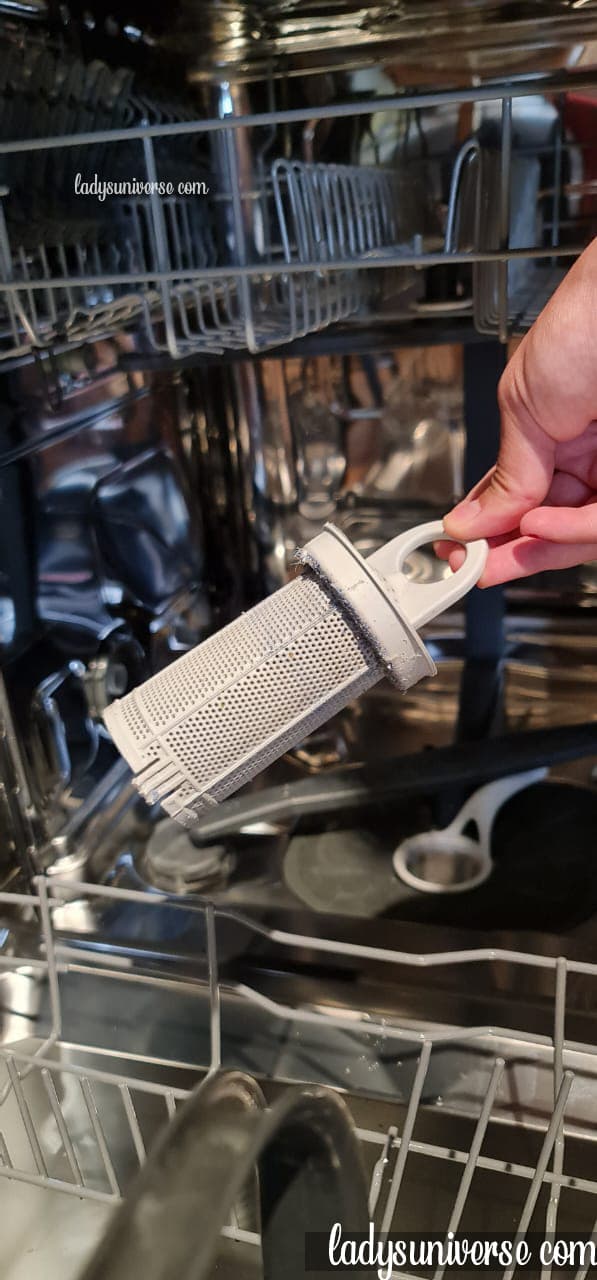
Monthly deep cleaning for dishwashers:
Deep cleaning once a month will keep your dishwasher running efficiently. You can pick up dishwasher cleaners to run this deep cleaning on an empty cycle without any dishes. These deep cleaners are designed to descale your dishwasher and remove any residue from the internal workings of your dishwasher.
The cascade platinum dishwasher cleaner pack is an excellent example of a deep cleaner. These are sold at most locations you would buy detergent, and they contain a one-pack of dishwasher cleaner that is dissolved in an empty wash cycle. These cleaners will come with instructions for use, which should be followed as most of these cleaners have the extra power to remove mineral deposits and caked-on detergent that builds up over time.
Before using these cleaners, check the instructions, and ensure you are running the dishwasher on an empty cycle. The empty cycle ensures that the heavy cleaner does not damage your dishes and that the cleaner can disperse through the washer tub and components fully.
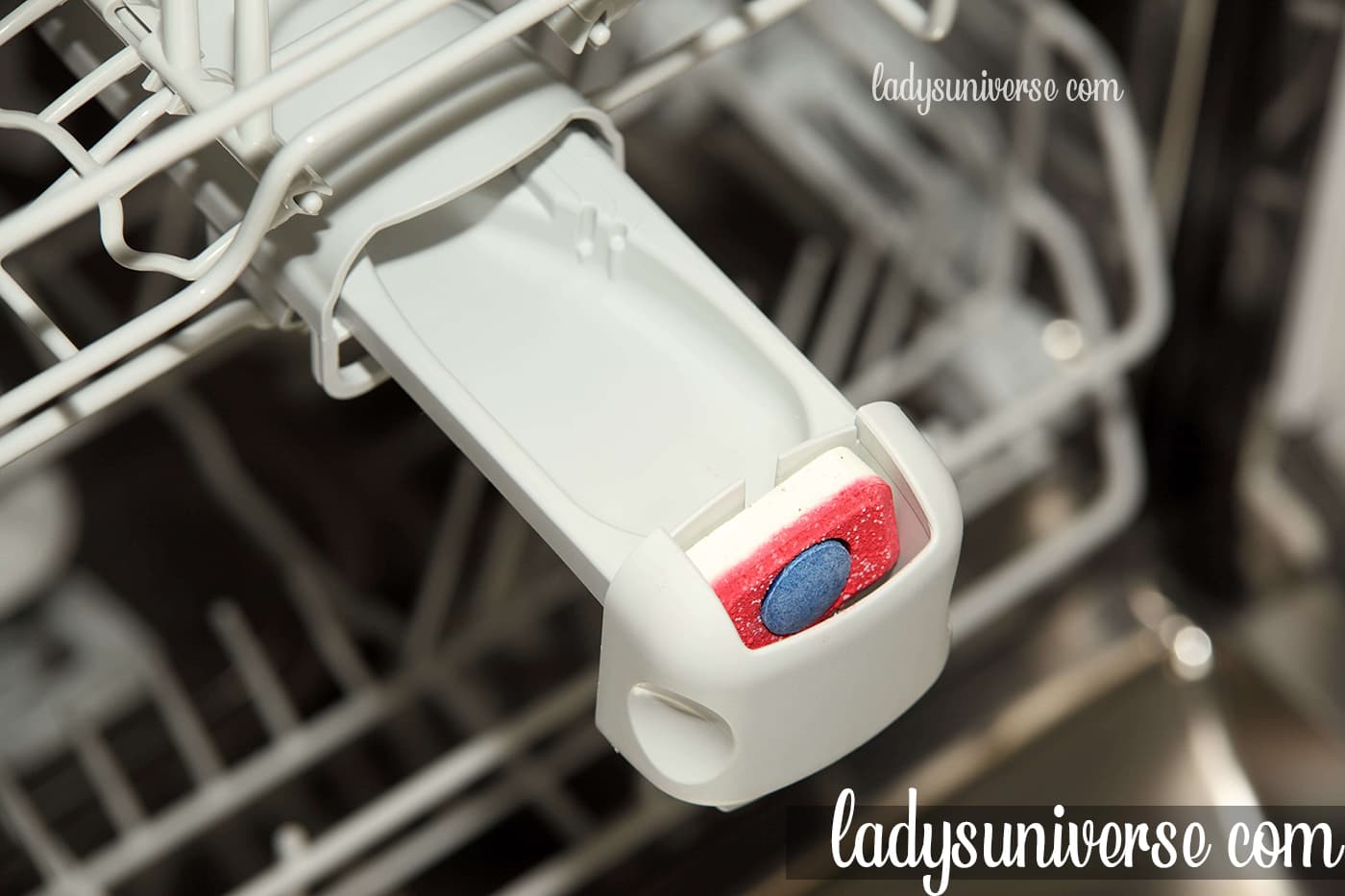
How to clean your dishwasher exterior:
Fingerprints, dust, and food stains will accumulate over time with your dishwasher, and it takes little time to look grimy or dull. Cleaning the outside of your dishwasher can brighten up your kitchen and ensure the protective finishes along the exterior of your dishwasher remain intact.
If you have a stainless steel dishwasher, picking up some stainless steel cleaners is a good start. These cleaners will shine up your dishwasher components and leave a protective film over the area. Polish your stainless steel dishwasher components with a cleaner of this type, and consider using a microfiber cloth to improve the shine of the components.
Microfiber cloths and following the instructions with the cleaner will help you maintain a streak-free shine with your dishwasher components along the exterior.
You should avoid using abrasive pads or cleaners with abrasive beads or sand in them, as these can permanently scratch components on the exterior of your dishwasher. Try to use the cleaner wiped in the direction of the grain of your stainless steel to avoid streaks or stains in the stainless steel components.
Using vinegar to deep clean a dishwasher:
Rather than buying over-the-counter deep cleaners, vinegar can be a natural way to cut down on residue and remove some of the mineral buildup in your dishwasher. To use this approach, empty your dishwater and mix vinegar in a bowl.
The vinegar solution should be a warm cup of distilled white vinegar. You can wipe down components with this or place a dishwasher-safe bowl in the top rack and run it on its heavy/pans cycle without added detergent. The vinegar can cycle through the lines in this empty cycle and around the appliance to remove added grime.
After running the cycle with vinegar in an empty dishwasher, grab a cup of baking soda, empty it into the bottom of your dishwasher, and run a second short/light cycle. The baking soda will react with any remaining vinegar and remove added grime from the surface of your dishwasher.

Can I use bleach to clean my dishwasher?
Bleach-based cleaners and even scented bleach are not recommended for dishwasher, especially if it has stainless steel components. Some detergents may contain trace amounts of bleach, but this is designed for removing stains like wine or coffee from your glasses.
Suppose you notice that your preferred dishwasher detergent uses bleach. In that case, consider running a short and empty rinse cycle for your dishwasher before you use the vinegar cycle. Avoid using bleach with vinegar cleaner as it can create chlorine gas, a deadly byproduct.
With these top tips, you can enjoy better performance out of your dishwasher and a better look for the exterior, and a reduction in odors throughout your kitchen.


